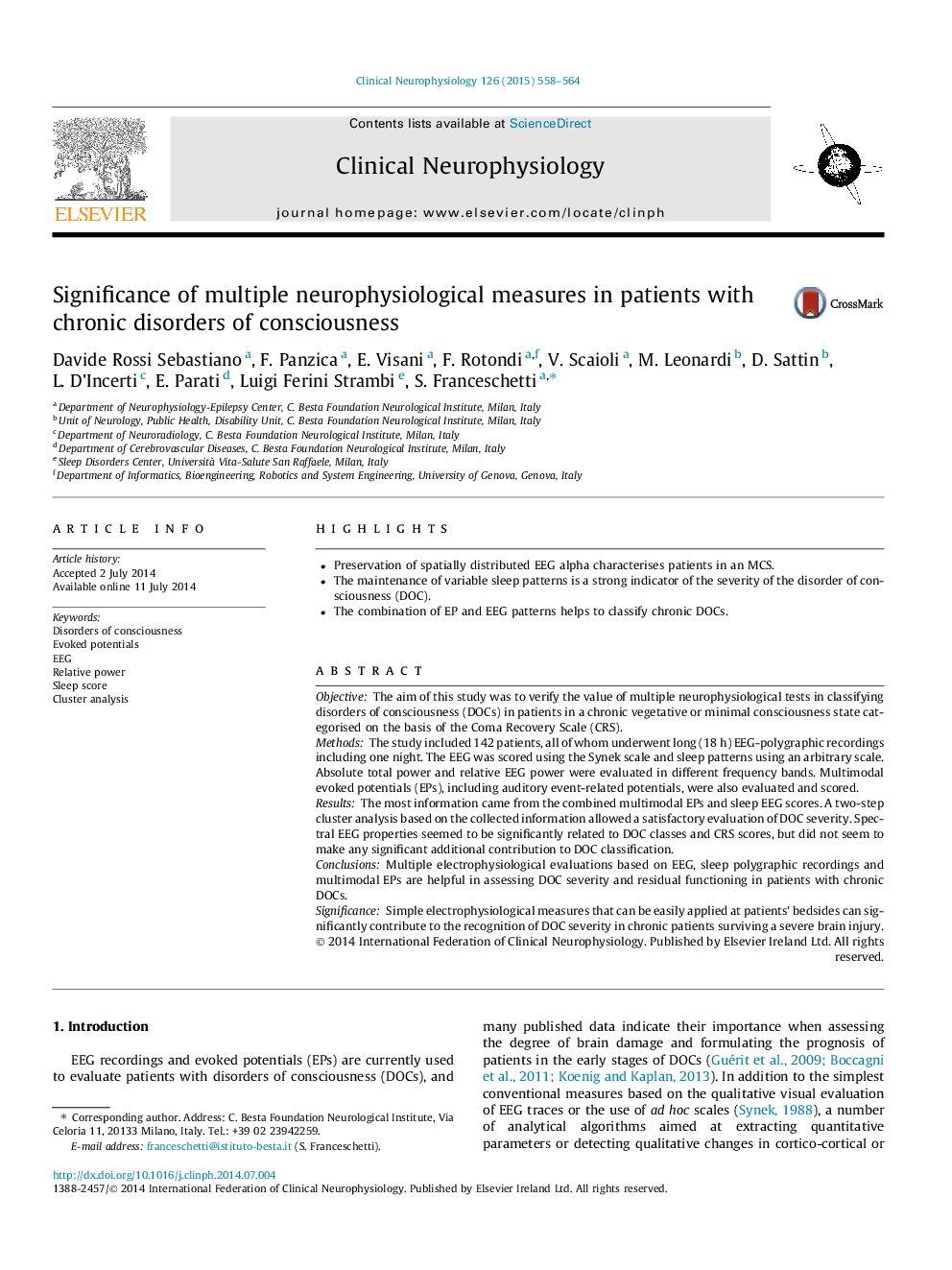| Article ID | Journal | Published Year | Pages | File Type |
|---|---|---|---|---|
| 3043716 | Clinical Neurophysiology | 2015 | 7 Pages |
•Preservation of spatially distributed EEG alpha characterises patients in an MCS.•The maintenance of variable sleep patterns is a strong indicator of the severity of the disorder of consciousness (DOC).•The combination of EP and EEG patterns helps to classify chronic DOCs.
ObjectiveThe aim of this study was to verify the value of multiple neurophysiological tests in classifying disorders of consciousness (DOCs) in patients in a chronic vegetative or minimal consciousness state categorised on the basis of the Coma Recovery Scale (CRS).MethodsThe study included 142 patients, all of whom underwent long (18 h) EEG-polygraphic recordings including one night. The EEG was scored using the Synek scale and sleep patterns using an arbitrary scale. Absolute total power and relative EEG power were evaluated in different frequency bands. Multimodal evoked potentials (EPs), including auditory event-related potentials, were also evaluated and scored.ResultsThe most information came from the combined multimodal EPs and sleep EEG scores. A two-step cluster analysis based on the collected information allowed a satisfactory evaluation of DOC severity. Spectral EEG properties seemed to be significantly related to DOC classes and CRS scores, but did not seem to make any significant additional contribution to DOC classification.ConclusionsMultiple electrophysiological evaluations based on EEG, sleep polygraphic recordings and multimodal EPs are helpful in assessing DOC severity and residual functioning in patients with chronic DOCs.SignificanceSimple electrophysiological measures that can be easily applied at patients’ bedsides can significantly contribute to the recognition of DOC severity in chronic patients surviving a severe brain injury.
